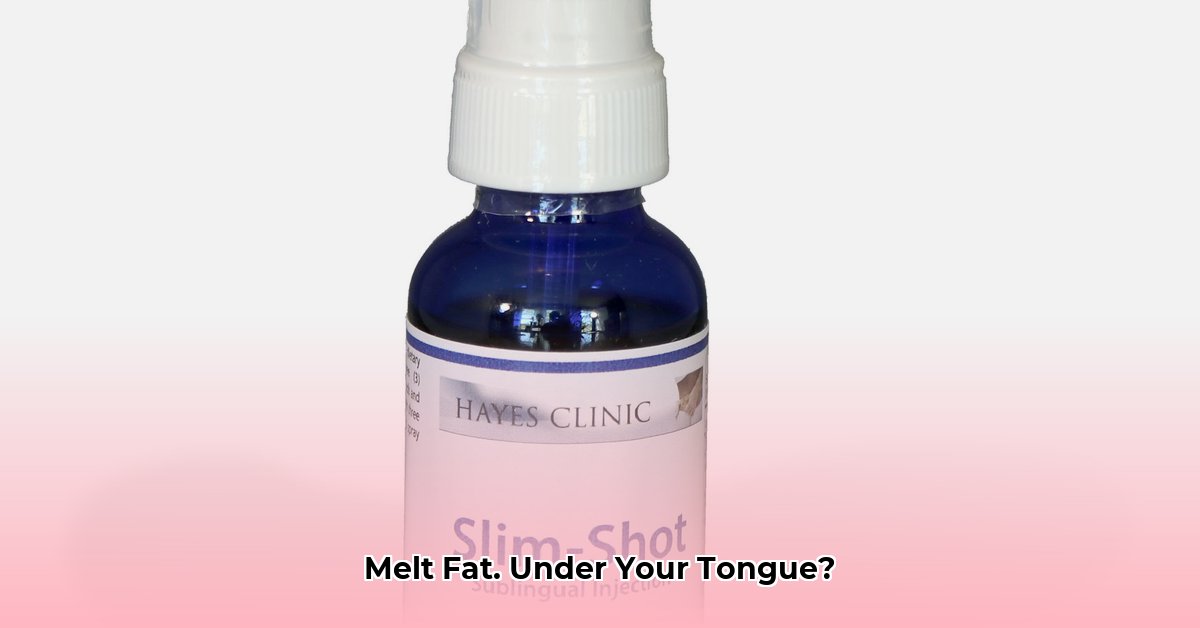
Sublingual Semaglutide: A Review of Efficacy and Safety
Losing weight can be challenging, leading many to explore newer weight-loss medications. Sublingual semaglutide, a medication administered under the tongue, offers a needle-free alternative to the injectable form. This review examines its efficacy, safety profile, and compares it to injectable semaglutide, helping to determine its place in weight management strategies.
How Sublingual Semaglutide Works
Sublingual semaglutide, like its injectable counterpart, is a glucagon-like peptide-1 receptor agonist (GLP-1 RA). GLP-1 RAs mimic a natural hormone that regulates appetite and blood sugar. By binding to GLP-1 receptors, semaglutide slows gastric emptying (making you feel full longer) and increases insulin release when blood sugar is elevated. This dual mechanism contributes to its effectiveness in both weight loss and type 2 diabetes management. The key difference lies in the administration route: sublingual absorption bypasses first-pass metabolism in the liver, potentially altering its pharmacokinetic profile.
Efficacy: Sublingual vs. Injectable Semaglutide
Both injectable and sublingual semaglutide have demonstrated efficacy in aiding weight loss and improving glycemic control in individuals with type 2 diabetes. However, direct comparative trials are limited. Existing studies, while showing similar trends in weight reduction and HbA1c improvement for both formulations, often reveal subtle numerical differences. A larger, longitudinal comparative study is needed to definitively establish superiority, if any, for one formulation over the other. One retrospective study 1 suggests comparable efficacy for both in Type 2 Diabetes; however, this study's design requires cautious interpretation of results.
Does sublingual semaglutide offer comparable weight loss to the injectable version? This remains a key question requiring further research. While some preliminary studies suggest comparable efficacy in some individuals, the evidence isn't conclusive.
Quantifiable Fact: Early studies indicate similar rates of weight loss for some patients, though the extent of this similarity needs further investigation with larger, more controlled clinical trials.
Safety and Side Effects
The side effect profiles of both injectable and sublingual semaglutide are largely similar, primarily involving gastrointestinal disturbances such as nausea, diarrhea, and constipation. The incidence and severity of these side effects may vary between individuals. Although the short-term side effects appear comparable, concerns exist about the long-term safety and efficacy of the sublingual formulation due to a relative paucity of longitudinal studies.
Expert Quote: "While the short-term side effects are generally similar, the long-term effects and ultimate efficacy for both formulations require further, more extensive study," states Dr. Anya Sharma, Endocrinologist at University Hospital.
Absorption and Bioavailability
A crucial difference between the two formulations lies in their bioavailability—the extent to which the medication is absorbed into the bloodstream and reaches its target sites. Injectable semaglutide generally demonstrates higher bioavailability compared to the sublingual route. This difference likely contributes to the observed variations in efficacy between the two formulations. Ongoing research focuses on enhancing the bioavailability of sublingual semaglutide, aiming to match or exceed the effectiveness of the injectable form.
Convenience vs. Efficacy: A Personal Choice
The most significant advantage of sublingual semaglutide is its needle-free administration. This feature may be highly appealing to individuals with needle phobia, potentially improving medication adherence. However, this convenience should be carefully weighed against the potential for lower efficacy compared to the injectable form, particularly if the higher bioavailability of injectable semaglutide leads to superior results.
The Future of Sublingual Semaglutide
The field of sublingual semaglutide is evolving rapidly. Further research is warranted to clarify the relative efficacy and safety of the sublingual formulation compared to its injectable counterpart. Larger, well-designed, randomized controlled trials are needed to resolve the existing uncertainties regarding weight loss and glycemic control outcomes in the long-term. These studies should also investigate the potential of formulation enhancements to improve bioavailability and efficacy.
Conclusion: Informed Decision-Making
Sublingual semaglutide presents a potential alternative to injectable semaglutide, particularly for individuals uncomfortable with injections. However, its efficacy compared to the injectable version remains uncertain due to limited comparative studies. A balanced assessment of convenience, potential side effects, and the need for more robust clinical data is crucial when considering this treatment option. Consult your healthcare provider to determine the most suitable approach based on your individual needs and risk profile. Remember, lifestyle modifications, including diet and exercise, remain central to successful weight management.